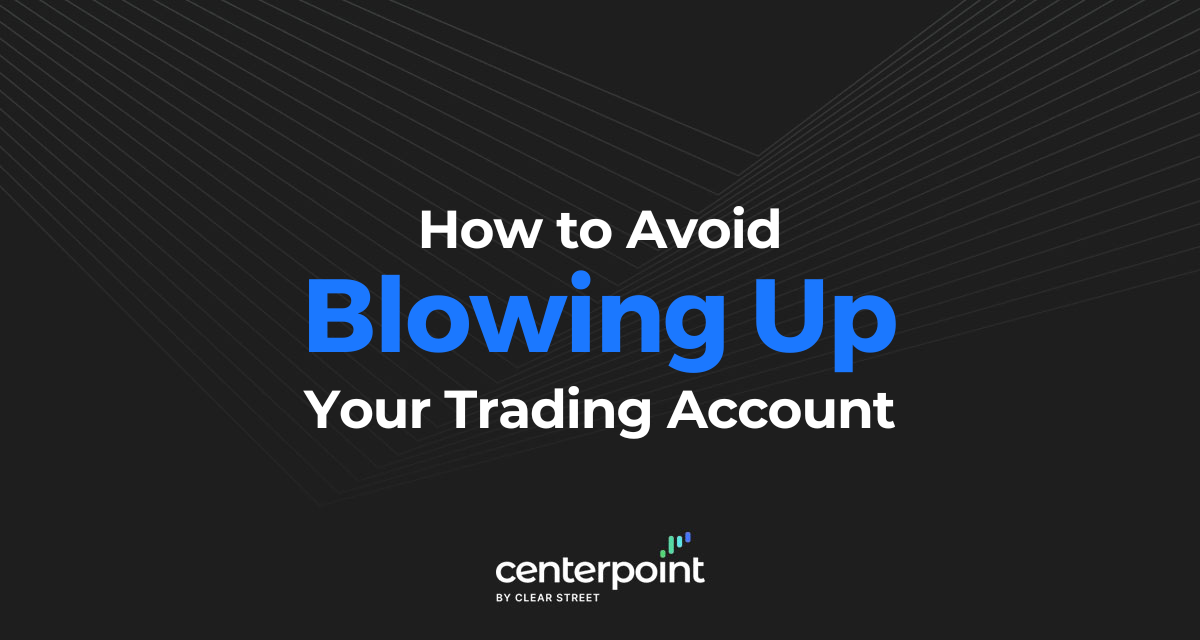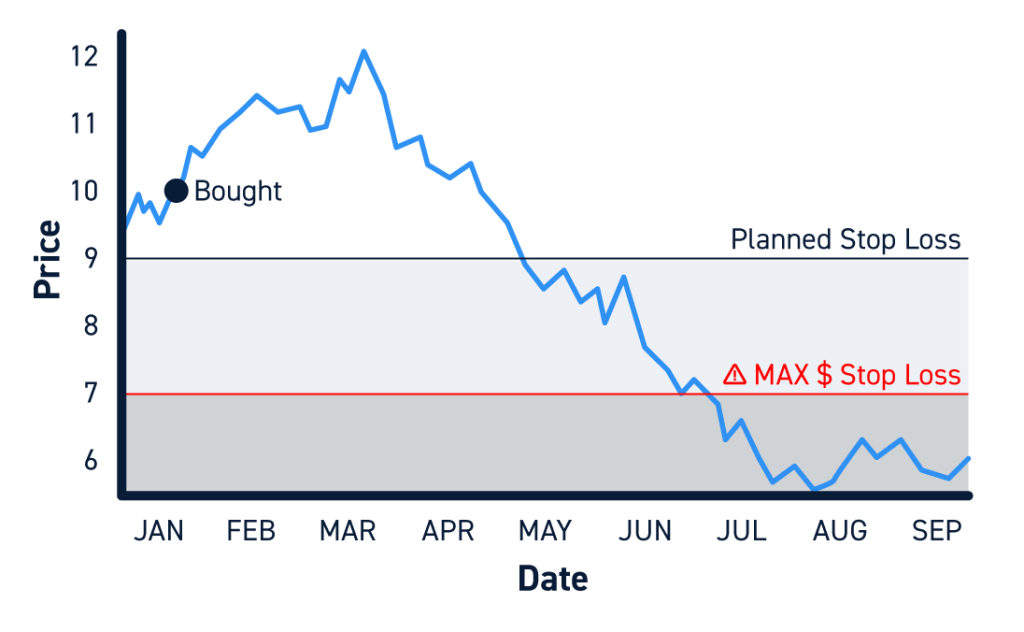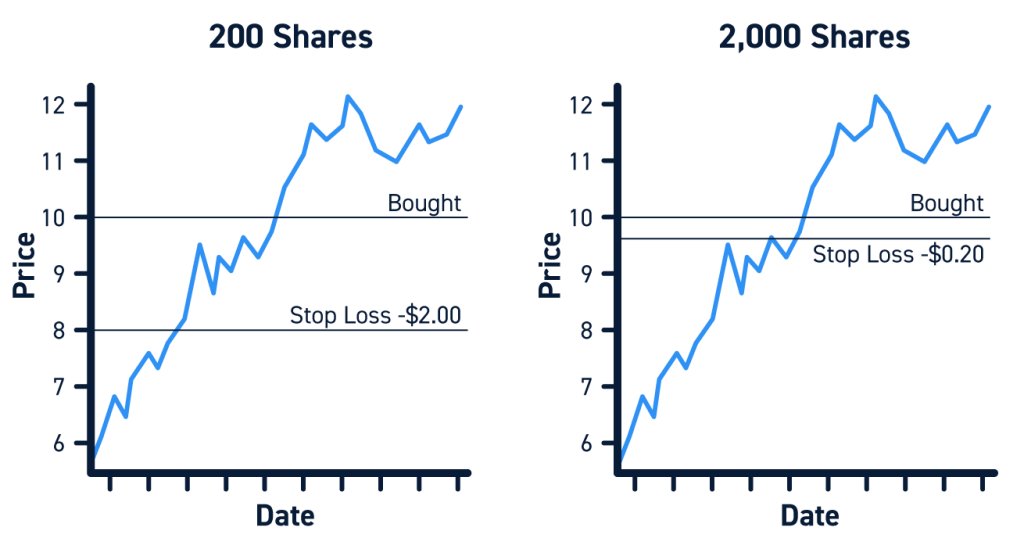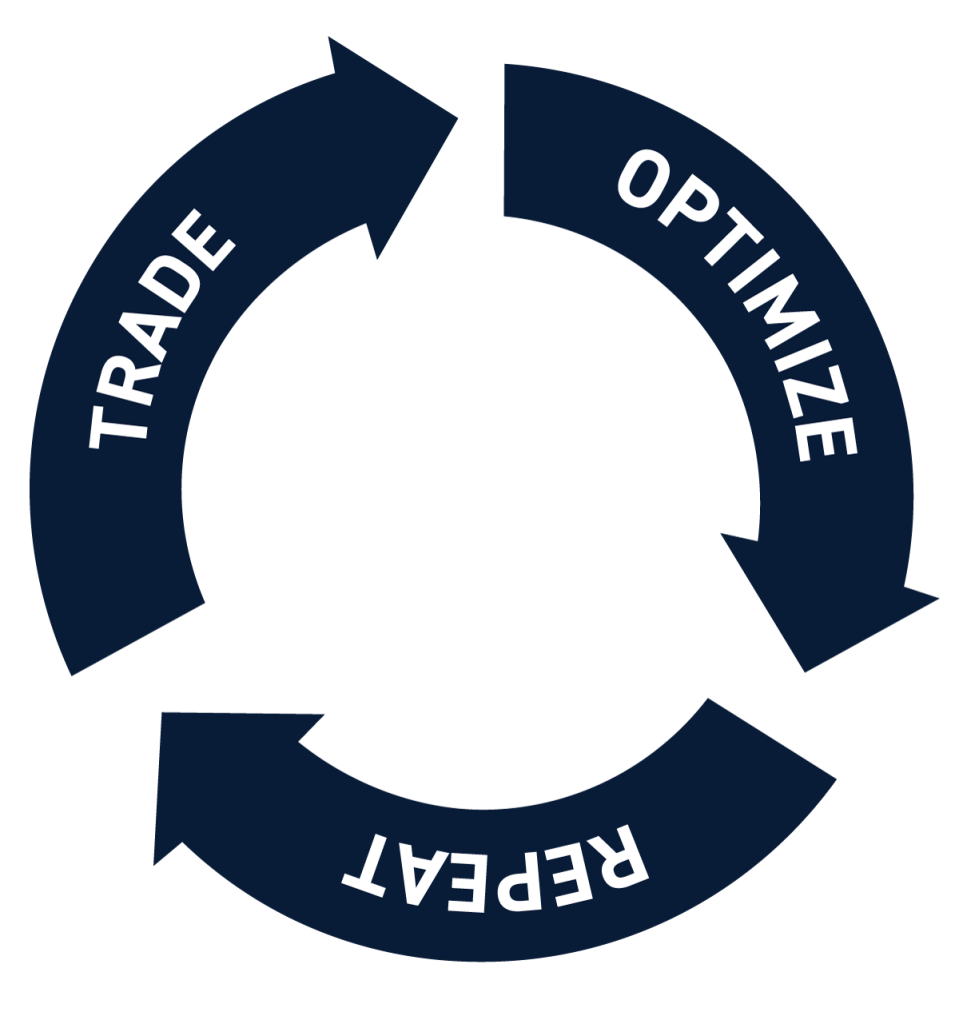It may feel embarrassing, but it’s quite common to blow up your trading account. It happens more often than you think and even some of the greatest traders in the world have had it happen to them earlier in their careers. Many will say that it was a painful but necessary part of the learning curve. It’s because they learned from their mistakes.
Pain is a great teacher. However, in this evolved era of advanced trading platforms and virtual simulators, traders can evolve quicker by learning from the mistakes of others rather than repeating them firsthand. Here are 10 ways to avoid blowing up your trading account to make your journey across the learning curve more efficiently and economically.
The Important of Risk Management
Executing trading strategies and refining your trading methodology is useless without proper and prudent risk management. Risk management is about controlling your exposure. This exposure comes in three main forms.
First to mind would be the allocation of shares (IE: position size). Secondly, the length of holding time leaves your position exposed to price volatility and/or unexpected events. Thirdly, your exposure in front of the screens watching every tick and price change.
The hypnotic draw of the level 2 screens, time of sales and charts with their indicators can play tricks on your psyche. The market knows this. The longer you stare, the more you are susceptible to getting sucked in by the algorithms from impulse trading, revenge trading and/or boredom trading. In a nutshell, managing your risk entails controlling your position sizing, holding period and screen time.
10 Ways to Avoid Blowing Up Your Trading Account
As a disclaimer right off the bat, there are no risk management techniques that guarantee you won’t blow up, but there are best practices that can help you avoid taking on unnecessary risk.
1) Set a Maximum Dollar Stop-Loss
This is the top rule from the get-go and must be implemented beforehand. You won’t know how important this is until you end up on the wrong side of a trade. As losses mount, it’s too easy to become a proverbial “deer in the headlights.”
Prepare a hard stop before ever hitting that BUY button. It must be hard wired before making a trade. Always be aware of what the maximum you will risk on any given trade and set a max dollar stop per day. While many traders use a percentage, be sure to quantify it in terms of a hard dollar amount. Therefore, if you use a 2% maximum stop-loss on a $100 stock, then (-2 points) or (-$200) is your maximum dollar stop-loss for 100 shares of a $100 stock price.
Implement a max daily stop loss that overrides everything. It can be a percentage of your account or a specific. For example, a $50,000 account with a 2% daily max stop is (-$1,000). These calculations must be done before all else, because when you’re in the “eye of the storm”, it’s easy to short circuit and let the losses climb without a personal circuit breaker that is your maximum dollar stop-loss. Make sure you execute on that on top of all else. The key is to live to fight another day.
2) Know Your Risk BEFORE You Enter a Trade
The premises, set-up and trigger for entering a trade depends on your trading methodology. In deriving your trading game plan, always play out the risk outcome scenario. What is the worst-case scenario?
Always play the “opposite” side of the trade in your mind to determine what your risk is before entering the trade. Do it systematically, going through each premise as a lever that can disqualify your reasons for staying with the trade. Then quantify what price levels would trigger your stop-loss based on your methodology and quantify your total dollar amount at risk. The signal and trigger for the stop loss and the dollar amount at risk are the two factors to know ahead of time.
Most importantly, follow through on the stop-loss prudently with no hesitation. Remember that stops are simply a PAUSE in your trading so you can reassess to reevaluate the trade without the potential for more losses in the meantime. You can’t control the market risk (what the market does), but you can control your exposure. Managing risk means managing your exposure. For example, if your entry is $20 and your stop is $18.50, then you have quantified (-$1.50) per share of risk on this trade.
3) Choose Appropriate Position Sizes
Your position sizing is one of the most important and material factors to consider before entering a trade. It determines your exposure and therefore your risk. A large or small price stop-loss is irrelevant if the position sizing is off balance.
Taking a (-$0.20) stop loss has the same effect as taking a (-$2.00) per share stop loss. How is that possible? If you position size 2,000 shares versus 200 shares, the end result is still the same with a (-$0.20) and (-$2.00) stop loss, respectively. It’s just math.
However, the harder thing to grasp is the emotional impact for someone usually trading 2,000 shares ever taking a (-$2.00) per share stop loss, even with 200 shares. This means that you must also gradually work up your comfort zone on the sizing and make sure it’s aligned with your emotional threshold as well. Consciously pin the dollar-amount loss to the sizing to acclimate to the notion of taking a larger price stop if position sizing is smaller. This is key when alternating between scalping and swing trading signals.
4) Honor Your Stop Losses
Setting a stop-loss means nothing if you don’t honor them. Unless premises have changed, stop losses must be taken consistently. Don’t try to justify not taking them. Calculate the proper wiggle room and factor them into the stop-loss ahead of taking the trade. Once the trade is execute, you are tied inextricably to the stop-loss. Even if you must take a stop loss and re-enter the trade with a new stop-loss, honor your stop losses.
If you have a difficult time honoring “mental” stops, consider using hard stops.
5) Be Extra Careful with Leverage
Leverage and margin are double-edged swords that must be respected and feared. Newbie traders tend to focus only on the upside of leverage equating it to more buying power and subsequently more potential profits. However, leverage almost means quicker and deeper losses as well. Usually accounts blow up because of the misuse of leverage and lack of stop-loss executions. Be aware of that.
With great power (leverage) comes great responsibility. You should never use maximum leverage as that’s when thing tends to get worse and quickly.
6) Be Conscious of Emotional Trading
As humanoids, we are subject to our emotions. It’s impossible to disconnect emotions with trading no matter how much we’re told to disconnect from them. There are certain types of emotions you should be consciously aware of so you can engage them head-on as they creep in.
Greed is a common emotion that creeps in when you are profitable. The notion of “ride your winners” will arise, however, that is all relative to your position sizing and your holding period. Never stray from your game plan and methodology. Stick to your plan. If you took 1,000 shares for a scalp, then stick with the smaller price move on the 1,000 and perhaps trim it down to 200 shares if a wider time frame suggests a larger trend in place. Keep in mind the shorter time frames will likely cause the stock to sell-off first before the wider time frame plays out. Allocation your shares accordingly. Longer time frames call for less share and smaller time frames call for larger shares. This abides by the risk rule for exposure based on position sizing and holding period.
Stress is caused by too much exposure either in terms of position sizing and/or exposure to the trading screens. When you are experience added stress, immediately cut your position size. If the stress is still heavy, then walk away from the screens. It’s normal to feel some anxiety and tension taking on a trade but you should be aware when the stress is higher than normal. If it is a result of being negative on the day, this is a key sign to take a break and live to fight another day. Too much stress can cause irrational decision-making, like trying to fit a square peg into a round hole and curve fitting signals that aren’t there.
Vengeful/Revenge trading happens when you are taking losses right before the stock goes your way. As you get frustrated with each stop loss that you honor, it feels like nothing is going your way. Every trade you make turns to crap. This is a blaring sign that your timing, market context or methodology is off. Don’t fight it. If you keep fighting it, you may get sucked into the infamous TILT zone where you are placing irrational trades with maximum leverage which is the surefire way to blow up your account. Remember, the market wants to stir up emotions. It will gladly give you a quarter, knowing it will take back a dollar from you. As soon as you understand this, then be ready to diffuse this scheme by honor your max stop-loss and walk away even before then.
Fear sets in after getting burned too many times. You may be gun shy to enter a trade. That’s a good thing. Fearful traders don’t blow up their accounts. However, they don’t make money either. The key is to reset your comfort zone and confidence with small victories. Take small shares for small wins just to reestablish a foundation of confidence. Go back to the basics and the highest probability signals and set-ups. Remember, smaller size shares allow for more wiggle room. Don’t just settle for stop-losses but taking gains as you get them. It’s amazing what a string of winning trades no matter how small can improve your confidence. Just don’t get overconfident and max out the sizing too quickly (again).
7) Stick to What You Know
During your journey as an evolving trader, you should be putting together watch lists. You will find yourself being drawn to certain types of stocks and find success with certain set-ups that converge with your style of trading. Stick to what you have found success with. Don’t stray out of boredom.
It’s one thing to expand your skill sets but another to impulsively jump headfirst into a realm that you are not familiar with. For example, you may have found your bread-and-butter playing a handful of $50-$70 range semiconductor stocks working up to positions of 1,000 shares. Don’t just headfirst into play super volatile thinly traded biotech stocks that have surged 50%-200% in a single day. The price action is completely different even if the price range is the same as your semiconductor stocks. Stick to what works and if you seek to venture into other areas of the market, start small just like you did with the semiconductor stocks. There is a learning curve in every niche of the markets.
8) Break Bad Habits Early
Spot those bad habits quickly and work to circumvent them from triggering. If you notice a gambling nature that causes you to go “all-in” on a single trade or option, then immediately recognize it and work to diffuse that. You may get lucky once or twice, but eventually bad habits leave negative lasting damage often leading to account blow ups.
Acknowledge when you simply got lucky on a trade and work to use proceeds to correct the course. Bad habits usually creep into the use of leverage. Diffuse the potential damage by minimizing the allocation. For example, instead of taking 20 cheap out-of-the-money (OTM) call contracts all-on, take 2 deep in-the-money (ITM) contracts to anchor you back to reality. While upside won’t be as much as the OTM gamble, the ITM minimizes your downside and provides you a win just as well. Spot your personal triggers that bring out bad habits and find ways to diffuse, minimize and circumvent them.
9) Don’t Trade with Capital You Can’t Afford to Lose
In other words, don’t trade with desperate money. If you can’t afford to lose it, don’t trade with it.
Day trading is throwaway capital. It must be viewed that way. It seems like a paradox, but when you need to make money, you find yourself losing more. When you don’t need the money, profits tend to roll in easier. It seems the more apathetic you are to the money, the clearer the signals appear and the “luckier” you get. This is a very real phenomenon for many traders.
Clarity comes from focusing on the process and not the outcome. Even professional gamblers know that a short-stacked bankroll is the top reason for failure. For traders, you must not only have efficient capital, but it has to truly be risk capital. It is money that you can afford to lose and don’t depend on to pay the bills. There’s no way around it. Be a student of the markets and continue to build up capital before taking the plunge.
10) Know When Not to Trade
Even though the markets can be traded up to 12-hours a day, not every minute of the day is trade-able or should be traded. The 12-hours applies from the premarket 8am EST opening to 8pm EST afterhours closing of the electronic communication networks (ECNs) and alternative trading systems (ATS) through a direct-market-access (DMA) broker platform.
Pick your best performing time periods to trade and avoid the worst performing periods. For example, if you perform most consistently in the first 30-minutes of the market open (9:30 am EST to 10:00 am EST) and last 90-minute of the trading day (2:30pm EST to 4:00pm EST), then stick to those time periods and take a break in between. Always be conscious of the time of the day and context of the market on days your consistently perform well and days you don’t.
Sometimes, it will not be you or your methodology, but the market itself that doesn’t conform well. The key to longevity as a trader is having the awareness and proper pacing knowing when to trade and when not to trade. Don’t force trades just to maintain a position, because cash is a position in itself that can’t lose. It’s the essence of zero-risk and that’s the ultimate outcome of proper risk management, eliminating risk all together.










